Recipe, pages 95-95.
I must preface this post by saying oysters are not my strong suit. Nothing from the phylum Mollusca, for me thanks. I’ve always hated them in shooters, and just generally in speaking.
“‘Hate’ is such a strong word…”
Well, maybe not hated — but strongly disliked.
I knew I had to do this recipe, and so — having made a pact with myself and the great cooking gods — I decided to “take the plunge,” and go divin’ for pearls…
Actually, I found out that the oysters we eat (Ostreidae) and pearl oysters (Pteriidae) are “two bivalves of a very different color,” so to speak.

Oysters on ice, with mixed seaweed at top right.
Oysters
I bought a dozen fresh Pacific oysters (US$0.99 ea) at 99 Ranch Market, another great Asian market I frequent for inexpensive seafood in San Diego. I dunno. Is that a good price? I was told “YES!” by a neighbor. I never buy the things.
Stored them in ice in the fridge.
Filled a large stainless bowl with ice and nested a smaller on in that to receive the shucked oysters.
Opened up and cleaned a few. For those of you who don’t know, this is called shucking an oyster.
You use a special oyster knife, or shucker, which is a very strong, not too sharp. and short-bladed instrument. With this knife, you pry the two sealed oyster shell edges open.
I loosened the oysters up out of their shells, cleaning some of the mud and dark gross parts out.
Then reserved the oysters and their juices to the chilled, nested bowl.
Lots of shells left. In this pic, you can see the spots where the oysters were attached, and the hinge areas with adductor muscles.
Ingredients
Fresh Pacific oysters, from 99 Ranch Market
Ice
Ginger Gelée
I peeled and then very thinly sliced the fresh ginger root on a mandolin. You don’t have to use one though. I’d suggest just slicing with a knife. The point is to make as much surface area as possible, so you get a lot of taste out of the ginger when you “steep” it later.
I soaked the gelatin sheets in very cold water until they were pliable. Then wrung out and reserved in a small bowl.
Mise en place:
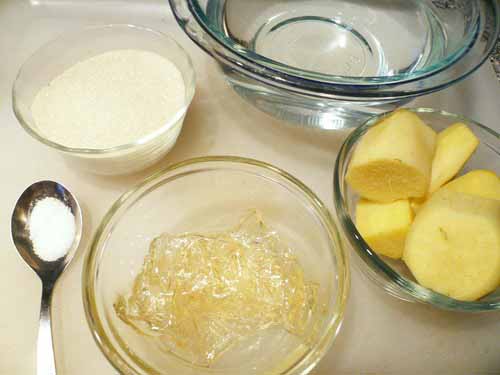
Shows the ginger before slicing.
I combined the water and sugar in a medium saucepan and brought to a boil.
Removed from the heat and added the ginger. Let steep for two minutes.
Strained through a chinois into a plastic container.
Then stirred in the gelatin until it was dissolved, and refrigerated until it set up.
This does not harden completely, as do some of the other agar gelées in the cookbook. No, this one still has a little wiggle to it. When you take it out of the fridge, use a spoon to mess it up. You’ll want rough chunks for your oyster “shooters.”
Ingredients
Fresh ginger root, peeled, from 99 Ranch Market
Water
356 Organic cane sugar, from Whole Foods
Diamond Crystal kosher salt
Rousselot “silver” gelatin sheets, from L’Epicerie
Beer Froth
A nice Scottish ale. I used a large bottle of it. Couldn’t drink the leftovers, with all that extra sugar and soy lecithin. Kinda cool to use the beer froth. One friend, though, who tried the dish later, said she did not need the beer in it.
“Don’t you get it?” I asked. “It’s oysters and beer!”
“Aaaaah,” she responded, coming around. “I get it. But I still don’t think you need it.”
I added the sugar and beer to a medium saucepan and brought to a simmer. It foams up a bit.
You’re supposed to skin the scum/foam off the top.
Then added the soy lecithin, removed from the heat, mixed thoroughly with my Cuisinart immersion blender, and reserved to my prep area.
Ingredients
McGarvey’s Scottish Ale, from Left Coast Brewing Company
356 Organic cane sugar, from Whole Foods
De-oiled soy lecithin powder
To Assemble and Serve
The recipe in the book calls for wild, domestic Steelhead trout roe from Blis Gourmet. But this stuff is so popular, it’s bought up as soon — or even before — it goes on market. I’ve read Chef Achatz has bought the whole lot from them at times. So it can be scarce…
Considering I was going to use maybe an ounce, I opted to get some ikura (fatty salmon roe, used in sushi) from Mitsuwa, a local Japanese marketplace (0.2lb for US$6.60). I was there last week to purchase some mixed seaweed for a salad, and noticed the gleaming orange bait in the refrigerator case. I also picked up a bottle of liquid nigari, for the upcoming ENGLISH PEAS, Tofu, Ham Pillow of Lavender Air recipe.
Perfect. I reserved the roe, chilled, to my prep area.
I sliced a scallion (US$0.89 a bunch at Albertson’s) on the bias into really, really thin strips and reserved to my prep area.
And as a nice, optional touch, I thought I’d use a few sprigs of various purdy-lookin seaweed (from the leftovers I had). Reserved to my prep area.
Just before assembly, I frothed the beer again with the immersion blender.
I set a small glass in a wide, flat bottomed bowl i my prep area.
I wanted to use a bottomless glass cylinder, the kind used as shades for tea lights, but could not find any on short notice. I know I had seen them somewhere a couple of weeks ago (when I didn’t need them, of course).
In the glass, I added a layer of ginger gelée, then two small spoonfuls of the roe, a couple scallions and a piece of seaweed. Then two oysters and some more gelée, roe, scallions and topped off with some beer froth. Kinda like layering lasagna.
Ingredients
Scallions
Blis steelhead trout roe, from Blis Gourmet, or
Ikura salmon roe, from Mitsuwa Marketplace
Mixed seaweed (optional), from Mitsuwa Marketplace
Overall, my friends liked this recipe quite a bit. One, a chef, commented on the wonderfully unexpected sweetness of the gel, and then the sudden burst of saltiness from the roe. He liked it a lot. That was cool.
Equipment
Salter digital scale
Measuring bowls
Kitchen knife and cutting board
Oyster shucking knife
Stainless bowls
Glass bowl
Medium saucepan
Wire whisks
Plastic containers
Cuisinart immersion blender
Serveware
Cuisine Vortez Bowls, from Crate&Barrel
Anchor Hocking tealight candle holders, from Michael’s
Yields: Half as many servings as oysters you buy
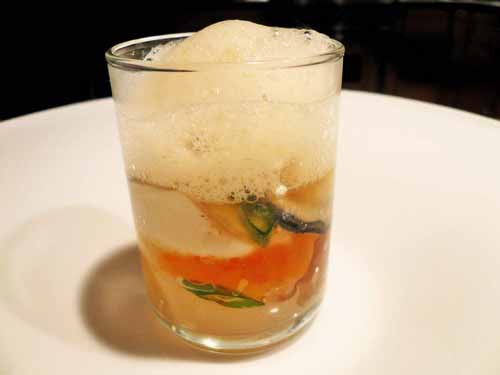

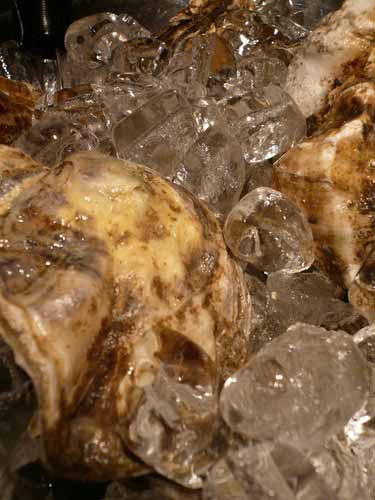
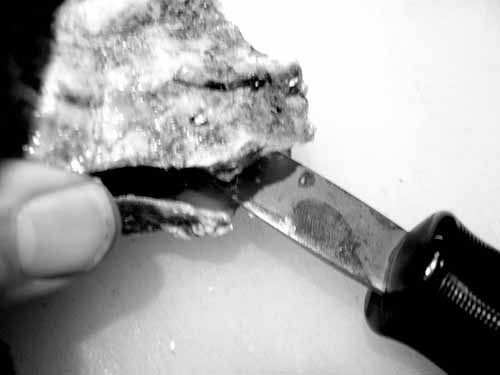
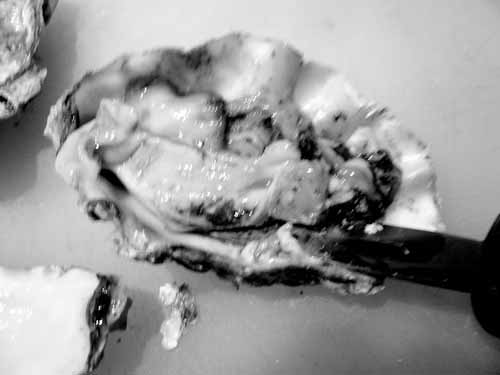
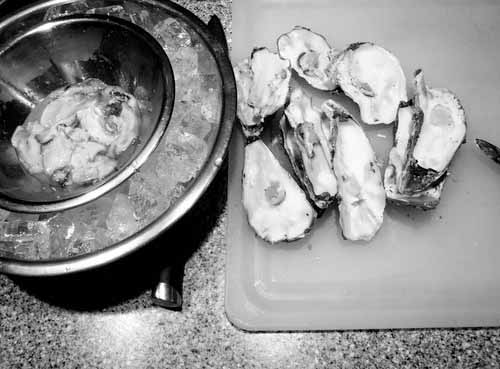


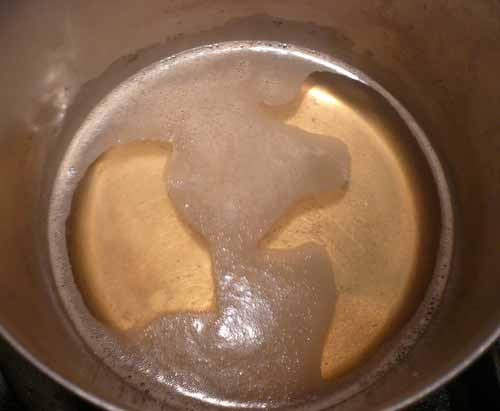
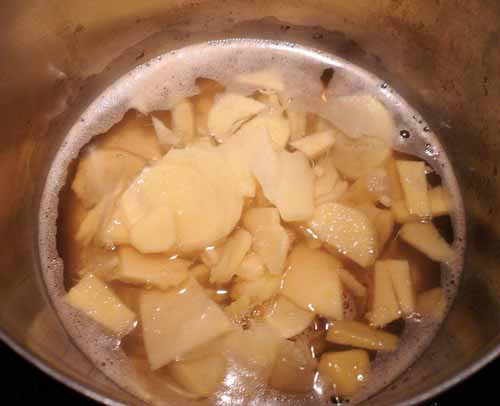

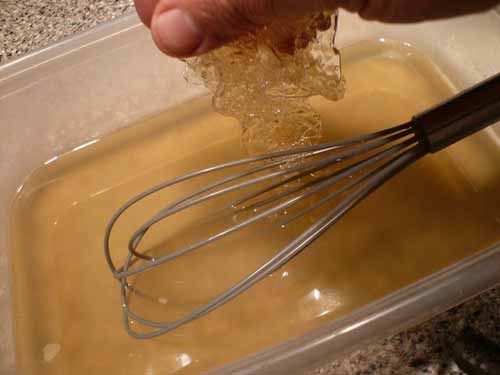
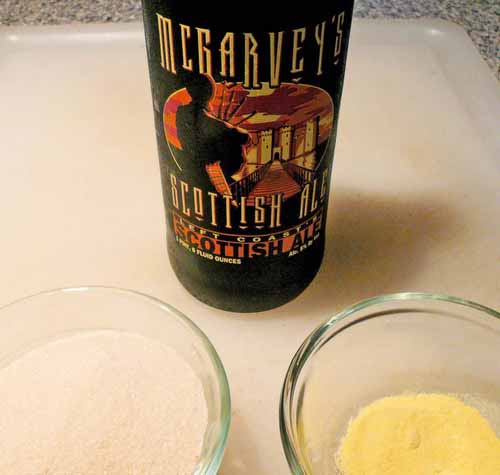

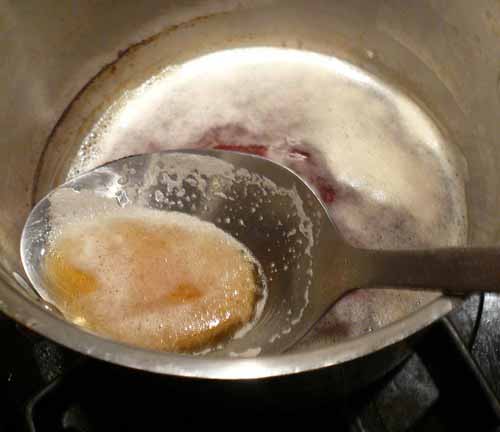
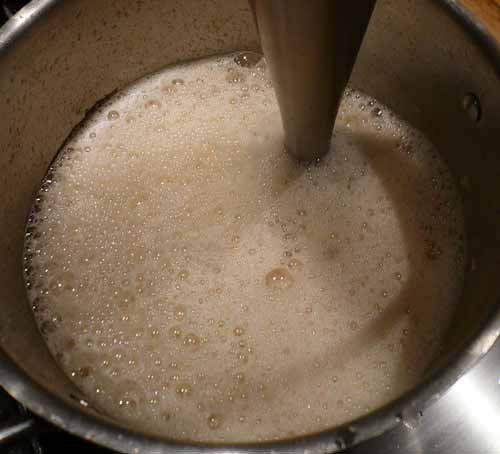
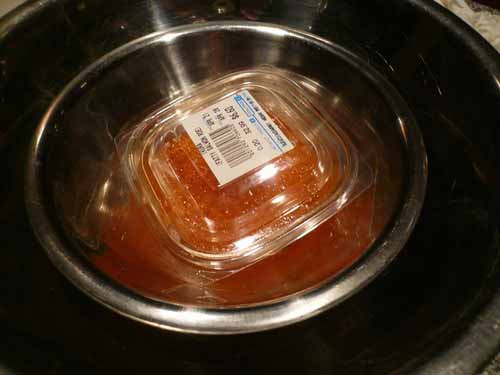
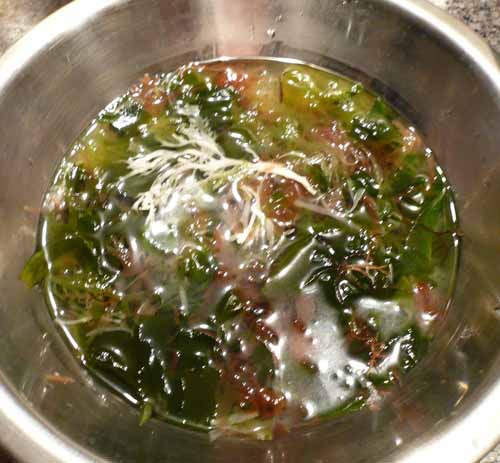
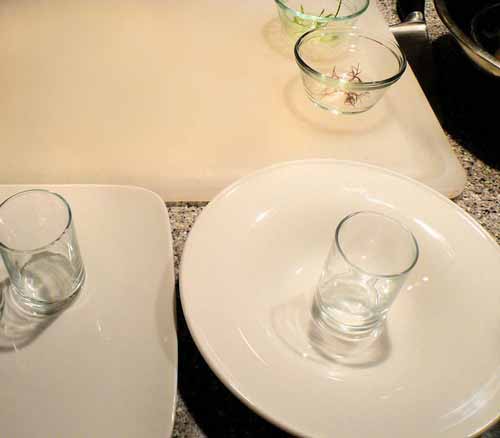

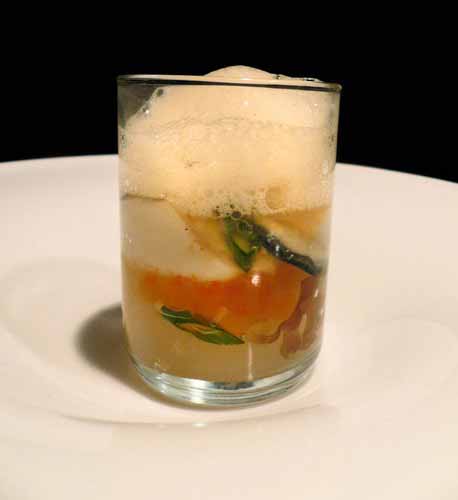
2 Responses to OYSTER, Ginger, Steelhead Roe, Beer